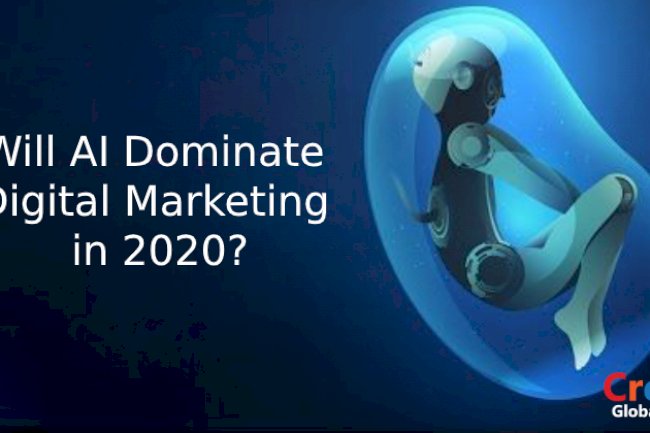How advanced data analytics will continue to streamline digital marketing strategy in 2020
How advanced data analytics will continue to streamline digital marketing strategy in 2020

It’s not controversial to suggest that talk of data analytics, over the last two decades, has far exceeded the examples of its successful implementation. We aren’t talking here about basic Google Analytics, but of programmes of activity and technology that really delves deep into improving insights and targeting, and dramatically impacts commercial decision making.
Perhaps the best example is the billions of pounds historically flushed down the toilet by big businesses trying to nail ‘attribution’. Technology not being quite ready or fit for purpose is the obvious reason for some of these failures, but new ways of looking and measuring things can also create conflicts between traditional job roles and functions, particularly in those businesses that really need data’s role to be elevated.
For instance, one client, having spent literally millions of pounds on attributing sales to different digital channels, found that it made no difference at all because certain channel specialists in their employ had their bonuses linked to the success of their specific channels, so they weren’t going to give up their purse without a fight. In the corporate world that means putting roadblocks before progress until everyone gives up, lying in an apathetic heap until a new C-level exec joins the business to try again – in three-year cycles of limited progress.
And so, immature technology and partisan human structures have conspired to make people apprehensive about how much jam is in the doughnut, or how much they can conceivably get out of said doughnut without ruining the doughnut itself.
However, things are rapidly changing, as perspective has dramatically shifted. ‘Attribution’ programmes, as with most attempts at ‘doing data’, were historically centred around channel; be it email, affiliates, paid search or SEO. The new wave is centred around the consumer. Channel becomes less important through that lens and, as businesses become more customer centric, their internal structures slowly follow suit and their use of data and technology becomes a driver as opposed to just the side show.
This is why you hear about ‘transformation’ programmes, teams, and steering groups. They exist because sometimes you can’t change the shape of a business fast enough so you build a ‘new house’ that you hope one day will annex everything else. This customer centricity is the biggest reason why marketing technology now comprises 23% of marketing budgets, and as decision makers start to take notice of results, this is only set to increase.
Looking into 2020 we can point to three main, inter-related trends that will spearhead this acceleration to customer centricity – these are the integration of CDP and DMP technologies, AI for marketing, and attribution (the sequel).
Integrating CDP and DMP
Both customer data platforms (CDP) and data management platforms (DMP) collate customer data; but, by combining the two, a more accurate picture of a customer is created from data across all channels and touchpoints. This is certainly something we can look forward to in 2020.
DMPs are used by marketers to merge datasets originating from first-, second- and third-party channels in order to target customers in ad networks. This helps maintain a consistent and recognisable experience for customers across a variety of marketing channels. A CDP combines all first-party customer data from CRMs, websites, email marketing, ads and point of sale systems, in order to build a specific profile around a customer. These profiles can then be segmented in order to facilitate targeted marketing campaigns.
Currently, no system exists where the two integrate. Ideally, DMP data would exist as another channel to the CDP, creating a richer dataset to base and construct a profile around. By amalgamating the two systems, there’d be a library of comprehensive customer profiles, from which clear, focused actions would arise for marketers.
AI for marketing
Artificial intelligence (AI) equips organisations with the ability to automate data heavy processes, perform tasks and respond to input from users by providing intelligent insight on the next best course of action. Consequentially, time and money are saved on repetitive tasks that would otherwise occupy a great deal of human productivity, and the workforce is augmented with AI as a digital co-pilot.
AI tools for CRM are a great example of this. They can automate data capture for marketers so that CRM data is complete and actually of use, and then analyse this data to provide insight into what marketing and advertising efforts and campaigns have been most successful. This gives marketers the opportunity to make informed decisions about what efforts to replicate and how to spend their future budgets.
Although more than half of decision makers admit that cost reduction is where AI is delivering; increasing business efficiencies is not all it has to offer. AI can also offer enhanced customer experience - chatbots are a great example of this. Although they are not currently widely used, AI algorithms are allowing chatbots to become more precise in the responses they deliver, and progressively more conversational in tone.
AI will also lead to developments in marketing personalisation. AI in the online ad space, for instance, is growing rapidly and this trajectory is set to continue into 2020. AI can categorise and segment an audience base by considering the history of users; what they have liked and viewed and what other users have found popular. It then automatically provides personalised product recommendations.
AI is no longer viewed with ambiguity in terms of being a leading innovative technology and delivering results. In short, the hype is very real, and with regards to its use in marketing, we should expect to see a diversification of the capabilities that AI possesses.
Multi-touch attribution
The development of advanced data analytics made possible by CDP and DMP and AI will, in turn, enable marketers to evaluate their strategies more effectively and will lead to more successful modes of marketing attribution, such as multi-touch attribution.
Attribution should be thought of as a flow chart, where the starting point is a customer’s first interaction with a brand online, and the end result is a purchase. Traditionally, marketers place emphasis on ‘last-touch’ or ‘first-touch’ attribution. By doing so, they would assign 100% of the credit of a purchase to the starting point of the flow chart (first-touch), or the last function before the decision to purchase (last-touch), thereby disregarding all the other functions and how they influenced the decision.
Multi-touch attribution analyses the effectiveness of every interaction in the flow chart, and supplies marketers with the data. This gives them full visibility into which specific marketing and advertising efforts are having an impact at specific stages of the buyer journey.
According to a survey conducted by Digiday, 63% of marketers said the ideal state of attribution was being able to track customers through the full marketing funnel. Although it is in its nascent stage, multi-touch attribution is the best way to achieve this. Research from the Technical University of Košice shows that multi-touch attribution can help achieve purchases in as little as five interactions in 40% of cases.
The data gathered as a result provides crucial context for a general assessment of the plethora of channels leading to a sale and for decisions surrounding social engagement, digital campaigns, brand engagement, and website optimisation. Money talks, and when marketers start to realise the potential multi-touch attribution holds, they will certainly take note. Throughout the next year, we should expect to see more marketers looking to use the multi-touch model of attribution in order to measure their campaigns with greater accuracy, allowing them to focus their budget with more confidence.
Trends in the coming decade will be structured around data; how we collect it, store it, analyse it, and what actions we take in light of it. Through various systems we now know more about our customers’ behaviour than ever before. Technological innovations in the digital marketing space in 2020 will only increase this knowledge and help to streamline the marketing campaigns of the future.
 Interested in hearing leading global brands discuss subjects like this in person?
Interested in hearing leading global brands discuss subjects like this in person?
Find out more about Digital Marketing World Forum (#DMWF) Europe, London, North America, and Singapore.
Related Stories
What's Your Reaction?

















